One of the riskiest places to work is at the construction sites, this is a place where your team is exposed to potential risks including falling objects, electrical hazards, respiratory threats and more; you cannot afford not to provide your team with the proper personal protective equipment (PPE). This guide discusses the 10 best products needed in construction safety at any site that must be present to remain feature compliant, minimize injury risks and build a robust safety culture.
1. Head Protection (Hard Hats & Impalement Caps)
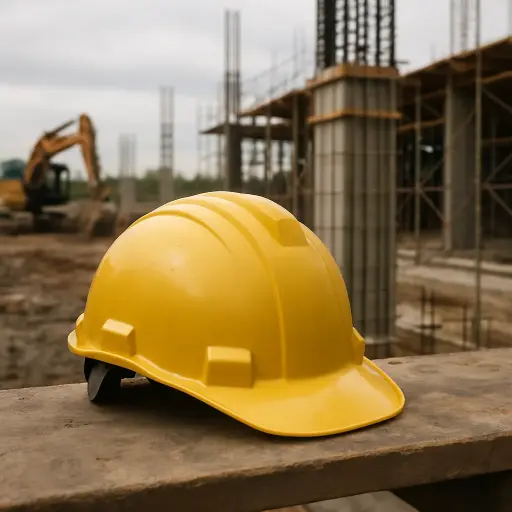
Falling tools, exposed rebar, and sharp materials make head protection a top priority. Construction hard hats and impalement caps, such as Deslauriers HH-M or DISC-10F, offer a reliable shield against traumatic brain injuries and impalement hazards. These helmets feature durable plastic or steel-reinforced designs, self-centering caps, and accommodate various rebar sizes. Fully compliant with OSHA Standard 701(b), they reflect industry-leading safety data and performance.
Head protection is the first line of defense on any site where falling or sharp hazards are present.
2. High-Visibility Clothing

Visibility is essential in construction zones, especially during early morning, evening, or low-light conditions. High visibility clothing, like fluorescent vests and reflective jackets, helps prevent accidents by making workers easily noticeable to operators of machinery and vehicles. These garments typically feature bright fluorescent yellow or orange hues, wide reflective bands, and lightweight, breathable fabrics. They meet ANSI/ISEA visibility standards, ensuring effectiveness across different environments. Wearing hi-vis gear is a simple step that greatly reduces the risk of accidental collisions on busy sites.
3. Safety Gloves (Hand Protection)
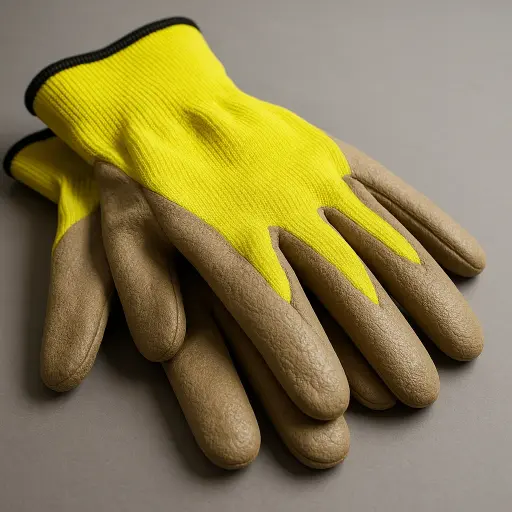
Construction work exposes hands to sharp edges, abrasive materials, chemicals, and tools. Construction safety gloves designed for specific tasks such as cut-resistant, impact-resistant, and chemical-resistant gloves types offer reliable protection against these hazards. Modern gloves are made from materials like Kevlar for cut resistance, and feature nitrile or neoprene coatings for chemical protection. Padded knuckles and breathable linings increase comfort during extended use. Each type aligns with OSHA's PPE standards for hand safety. Having the right glove for the job helps reduce the most common injuries experienced on-site.
Buy Safety Gloves from Bracket Company for Guaranteed Quality and Protection – Our safety gloves are designed to meet Canadian safety standards, offering superior comfort, durability, and protection for a variety of industries.
4. Safety Footwear
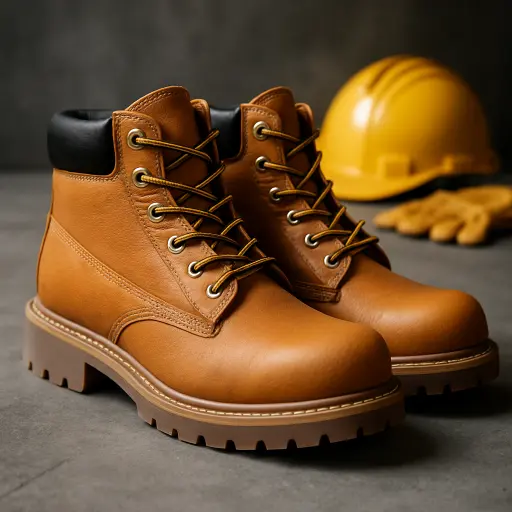
Sharp debris, falling objects, and slippery surfaces all pose threats to workers’ feet. Steel-toe boots and gumboots provide essential foot protection on construction and industrial sites. Look for footwear with reinforced toecaps, slip-resistant soles, chemical-resistant materials, and waterproof membranes. These boots are designed to meet CSA, ASTM, or equivalent safety standards. Proper safety footwear prevents injuries that can otherwise lead to long recovery periods and time off work.
5. Eye and Face Protection
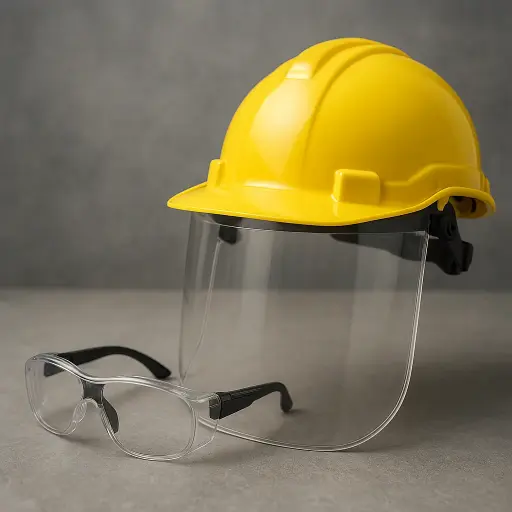
Dust, debris, chemical splashes, and flying particles can cause serious and sometimes permanent eye damage. Construction workers should wear protective gear such as safety glasses, goggles, or face shields during operations like sawing, welding, or mixing chemicals. Key features include anti-fog lenses, UV filtering, scratch resistance, and adjustable straps for a secure fit. This equipment must comply with ANSI Z87.1 standards to ensure proper eye safety. Consistent use of protective eyewear significantly reduces incidents of work-related eye injuries.
6. Hearing Protection
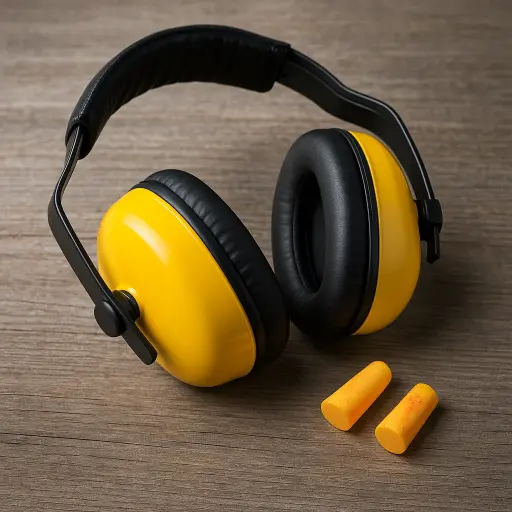
Construction noise levels can exceed safe limits, especially when operating jackhammers, drills, and heavy machinery. Without proper hearing protection, workers may suffer from noise-induced hearing loss. Earplugs and earmuffs with high Noise Reduction Ratings (NRR) help lower noise exposure and protect inner ear structures. These devices are mandatory when workplace noise exceeds 85 decibels, according to OSHA regulations. Good hearing protection safeguards not only hearing health but also communication and focus on the job.
7. Respiratory Protection
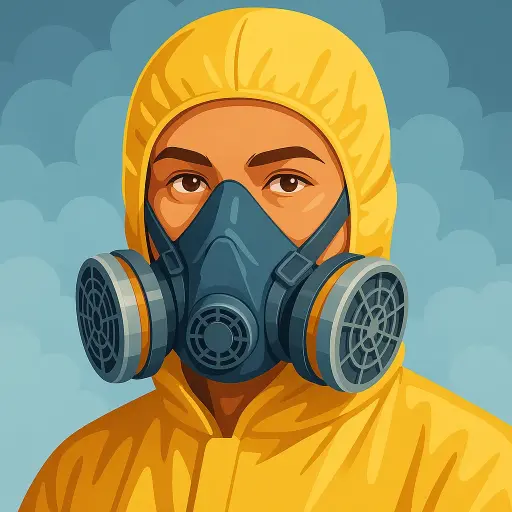
Silica dust, welding fumes, and airborne toxins are common respiratory hazards on construction sites. Respiratory protection gear, including N95 masks, half-face or full-face respirators, and powered air-purifying respirators (PAPRs), helps filter harmful particles and gases. These construction masks are equipped with replaceable filters, tight seals, and adjustable straps for long-wear comfort. Compliance with NIOSH and OSHA standards ensures proper protection based on exposure levels. Equipping workers with the right respiratory gear supports long-term lung health and workplace safety.
8. Fall Protection Systems
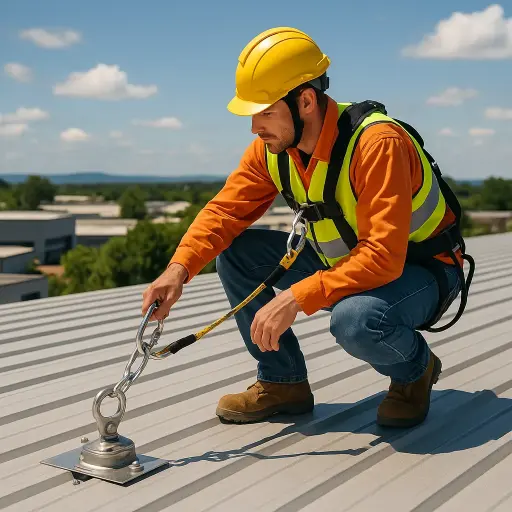
Falls from roofs, scaffolding, or elevated platforms remain one of the leading causes of construction site injuries. Fall protection equipment like harnesses, lifelines, guardrails, and anchor points helps mitigate this risk. Shock-absorbing harnesses and corrosion-resistant anchors are engineered to handle sudden force. OSHA mandates fall protection for work being done more than 6 feet off the ground under Subpart M guidelines. Proper fall protection not only saves lives but also it is also legally required on most job sites.
9. First Aid Kits and Emergency Equipment
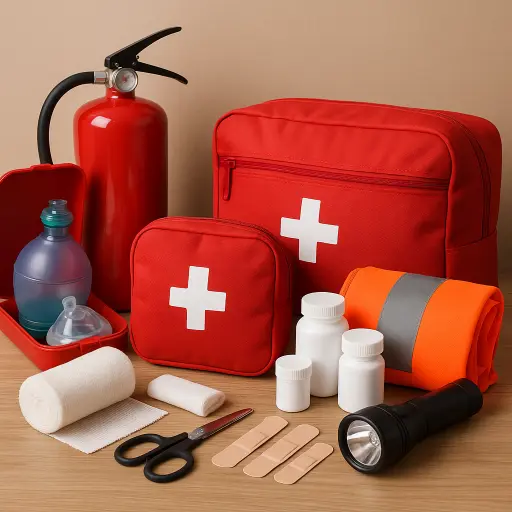
The availability of first aid materials nearby can save a lot of time when a medical emergency or a case of injury occurs on site. To handle accidental situations away at any place of construction, definite first aid kits and emergency equipment's must be placed there and visible to all. The first aid kits ought to have such things as antiseptic, CPR masks, eyewash solutions, AEDs and clear instructions guides. Such tools are to comply with OSHA on safety and emergency care. The preparation also helps to respond quicker and the emergencies can be mitigated by decreasing the extent of injuries.
10. Fire Prevention and Electrical Protective Gear

The construction environment is prone to fires and electrical accidents that are known to heighten rapidly. The necessary equipment to prevent and control such risks is fire extinguishers, lockout/tagout systems, arc flash suits, insulated gloves, and GFCIs. Such products are expected to cope with inflammable substances, overloaded circulation, and possible electric shock. Anything needs to meet NFPA 70E, CSA, and OSHA safety codes in order to have complete protection. The availability of fire and electrical safety equipment on location is also important to avoid unnecessary accidents that give rise to injury or death of your workforce.
Conclusion
Safety is the backbone of any successful construction project, therefore it is important to
equipping teams with the right gear not only helps prevent injuries but also ensures compliance
with industry standards. From head protection to fire prevention, following these ten products
form the foundation of a safe and productive construction site.
For trusted, compliant safety gear in Canada, explore the wide range of PPE, safety supplies in
Canada, and worksite equipment available at Bracket Company.

